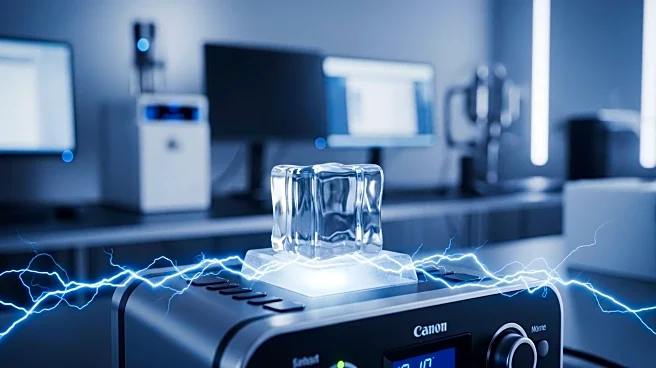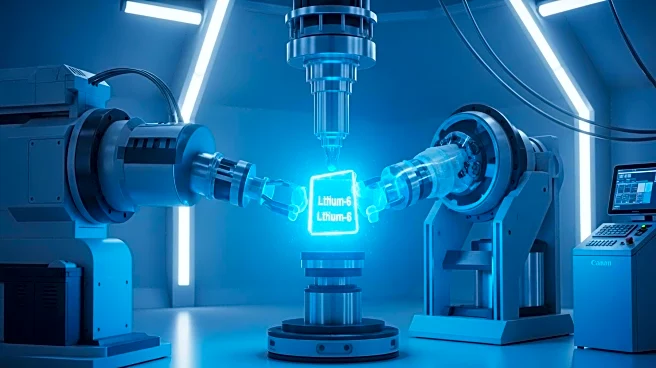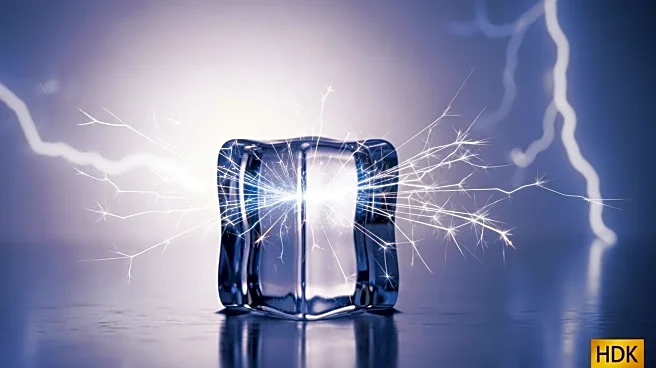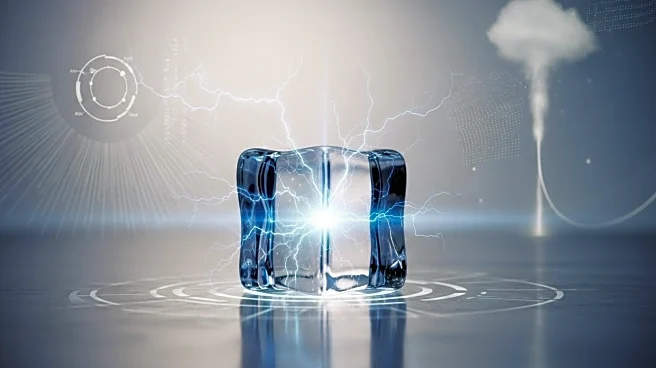What is the story about?
What's Happening?
A recent study co-led by ICN2 has revealed that ordinary ice is a flexoelectric material, capable of generating electricity when unevenly deformed. This groundbreaking discovery, published in Nature Physics, highlights ice's potential technological applications and its role in natural phenomena like lightning. The research involved collaboration between ICN2, Xi'an Jiaotong University, and Stony Brook University. The study found that ice can produce electric charge in response to mechanical stress at all temperatures, with a thin ferroelectric layer forming at the surface below -113°C. This property allows ice to generate electricity in two ways: flexoelectricity at higher temperatures and ferroelectricity at very low temperatures. The findings suggest that ice's flexoelectricity could contribute to cloud electrification during thunderstorms, potentially explaining the origin of lightning.
Why It's Important?
The discovery of ice's flexoelectric properties could have significant implications for technology and natural science. In the technological realm, ice's ability to generate electricity could lead to the development of new electronic devices, particularly in cold environments. This could revolutionize sensor and capacitor technologies, similar to those using electroceramic materials like titanium dioxide. In terms of natural phenomena, understanding ice's role in cloud electrification could enhance meteorological models and improve predictions of thunderstorms and lightning. This knowledge could benefit industries reliant on weather forecasting, such as agriculture and aviation, by providing more accurate data for planning and safety measures.
What's Next?
Researchers are exploring new lines of investigation to harness ice's flexoelectric properties for practical applications. While specific solutions are still in development, the potential for using ice as an active material in electronic devices is promising. Future studies may focus on fabricating devices directly in cold environments, leveraging ice's unique properties. Additionally, further research into the role of flexoelectricity in natural phenomena could refine our understanding of weather patterns and improve predictive models. Stakeholders in technology and meteorology are likely to monitor these developments closely, anticipating advancements that could impact their fields.
Beyond the Headlines
The discovery of ice's flexoelectric properties raises intriguing questions about the intersection of natural materials and technology. Ethically, the use of ice in electronic devices could prompt discussions about environmental impact and sustainability, particularly in regions where ice is abundant. Culturally, this research may influence perceptions of ice, traditionally seen as a passive material, by highlighting its dynamic capabilities. Long-term, the integration of natural materials like ice into technology could shift industry standards, promoting innovation in sustainable design and material science.
AI Generated Content
Do you find this article useful?














